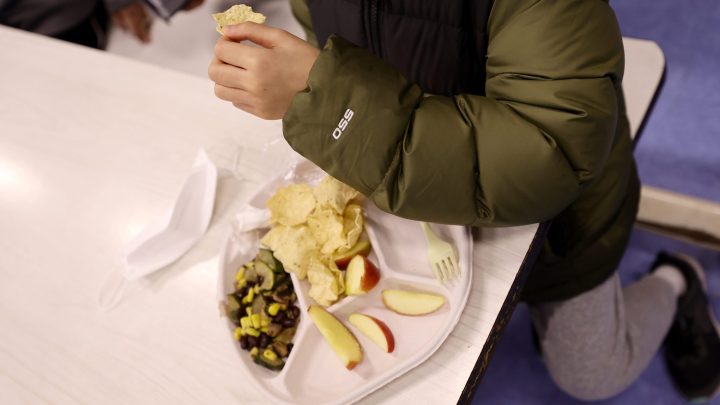
Pandemic rules for school lunch program expiring

The federal government’s school lunch program was greatly expanded after the pandemic hit the U.S. in early 2020.
Since then, the Agriculture Department, which runs the program, issued more than 100 waivers. Among other things, those waivers allow all school kids to get free breakfast and lunch in school.
But the USDA will lose the authority to grant those waivers at the end of this month. Congress could extend that authority, but it’s not expected to.
One of the USDA waivers relaxed a rule that only allowed summer meal programs in communities where at least 50% of the students already qualified for free lunch programs.
“Thanks to the waivers, local schools and community groups could determine where to set up their meal sites based on demand and based on need,” said Diane Pratt-Heavner with the School Nutrition Association, a trade group for school cafeteria workers.
The anti-poverty group Share Our Strength estimates that 1 out of 5 summer meal sites open last year won’t be open this summer.
That means “it could jeopardize access to summer meals for nearly 7 million children across the country,” according to Rachel Sabella, director of Share our Strength’s No Kid Hungry New York program.
Plus, those summer meal sites that are open won’t be able to hand out food to go. They’ll have to serve sit-down meals at specific times. That doesn’t mesh with some parents’ schedules.
Also, the government will reinstate family income limits for free school meals. Rebecca Wood, a single mom in the Boston area, makes just above the limit. Before the USDA made meals free for all students, she said, she struggled to pay her daughter’s school cafeteria bill.
“She was in first grade, and they were telling her that I needed to pay her debts,” Wood said. “And that was just heartbreaking because I was doing the best I could. I just couldn’t keep up.”
There can be a stigma around the free lunch program that discourages families from applying. That’s a problem, said Crystal FitzSimons at the Food Research and Action Center.
“Participation in school meals has been shown to reduce absenteeism, reduce tardiness, improve student behavior and improve academic achievement.”
FitzSimons added that many school districts are still in crisis mode, and this is not the time to drop the waivers that helped them feed hungry students.
Correction (June 6, 2022): A previous headline mischaracterized the scope of the changes to the federal school meals program.
There’s a lot happening in the world. Through it all, Marketplace is here for you.
You rely on Marketplace to break down the world’s events and tell you how it affects you in a fact-based, approachable way. We rely on your financial support to keep making that possible.
Your donation today powers the independent journalism that you rely on. For just $5/month, you can help sustain Marketplace so we can keep reporting on the things that matter to you.

















